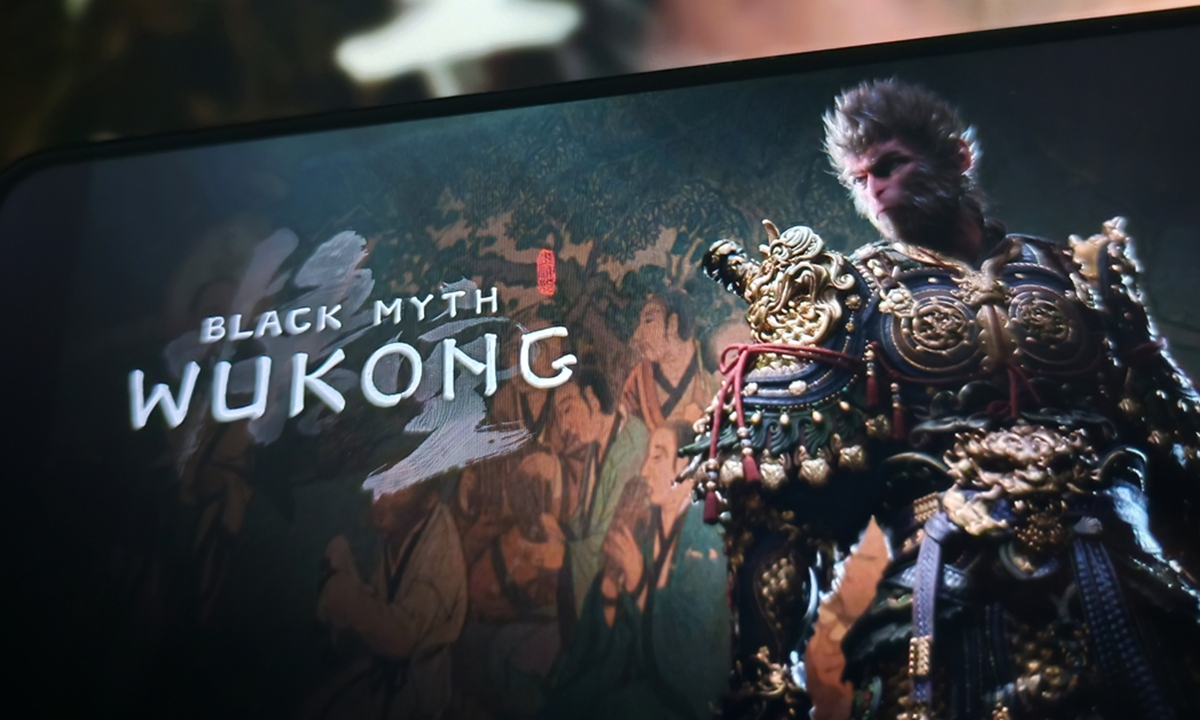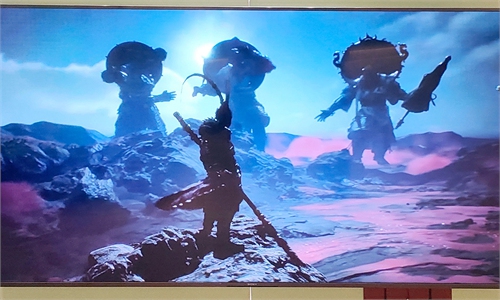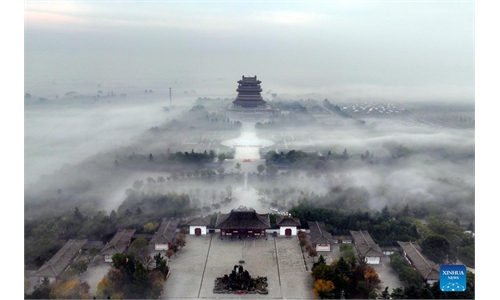ARTS / CULTURE & LEISURE
‘Black Myth: Wukong’ sparks cultural tourism boom in China

Promotional material for Black Myth: Wukong Photo: VCG
The gaming world has witnessed the launch of Black Myth: Wukong, China's first AAA game. Taking the internet by storm, this groundbreaking game, celebrated for its stunning reproduction of ancient Chinese architecture and its innovative take on the Monkey King legend from Journey to the West, has not only captivated players but also breathed new life into China's cultural tourism.
The various "cultural tourism plus" models - ranging from games to films - stand out for their ability to fuse traditional market principles with cultural promotion. Unlike conventional media products, which often treat cultural tourism as a secondary element, these collaborations place culture at the forefront, offering a dynamic and interactive approach to heritage tourism.
The success of Black Myth: Wukong exemplifies this shift. The game's detailed representation of Chinese mythology has not only attracted a global audience but also sparked a wave of cultural tourism initiatives across the country.
For instance, players who have completed specific levels of the game are eligible for free entry to select scenic spots. The Yunzhong Daji Scenic Area in Lishui, East China's Zhejiang Province, is offering free entry to players who have successfully cleared the fourth chapter of the game, in which the area features. Meanwhile, Lingyan Temple in Jinan, East China's Shandong Province, is offering lifelong free admission for completing the third chapter. Mount Huaguo in Lianyungang, East China's Jiangsu Province, also announced that all players who complete the game are invited to visit the hometown of the Monkey King for free.
Black Myth: Wukong features areas from 36 scenic spots across China, and as the game's popularity grows, cultural and tourism departments are eager to promote their related attractions. This approach not only drives engagement with the game but also encourages real-world exploration of China's cultural landmarks.
The synergy between Black Myth: Wukong and cultural tourism is also a striking example of how modern digital media can be harnessed to promote and enhance traditional cultural experiences. In North China's Shanxi Province, whose historical locations feature prominently in the game, the local cultural and tourism department has launched an innovative initiative titled "Traveling with Wukong in Shanxi." This unique campaign offers tailored travel routes and special passes that connect fans with the game's real-life locations.
In a similar vein, the animated film White Snake: Afloat has seamlessly integrated with the cultural tourism of the West Lake in Hangzhou. This collaboration, supported by local tourism authorities, highlights the growing trend of blending media and cultural tourism to enhance visitor experiences.
Other historical sites, like Yueyang Tower in Central China's Hunan Province, has also adopted creative promotions, offering free admission to visitors who can recite classical Chinese poetry related to these sites. Such initiatives not only attract tourists but also deepen their appreciation of Chinese cultural heritage.
The growing synergy between digital media and cultural tourism marks a new chapter in China's efforts to promote its rich historical and cultural assets. By leveraging popular media like games and films, these projects have created immersive experiences that captivate audiences and encourage them to explore the country's storied past firsthand.
As China continues to innovate its cultural tourism, the integration of modern media with traditional heritage is set to redefine the landscape, offering both locals and international visitors a unique and enriching way to engage with the nation's rich cultural tapestry.
The author is a reporter with the Global Times. life@globaltimes.com.cn



